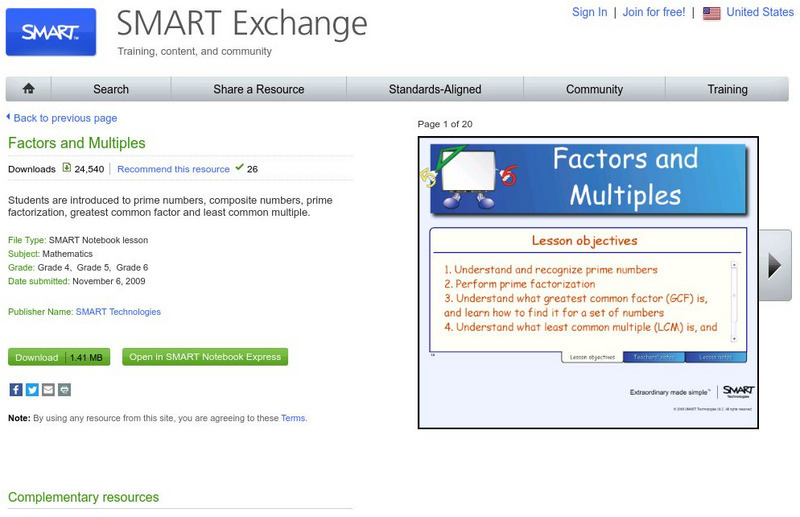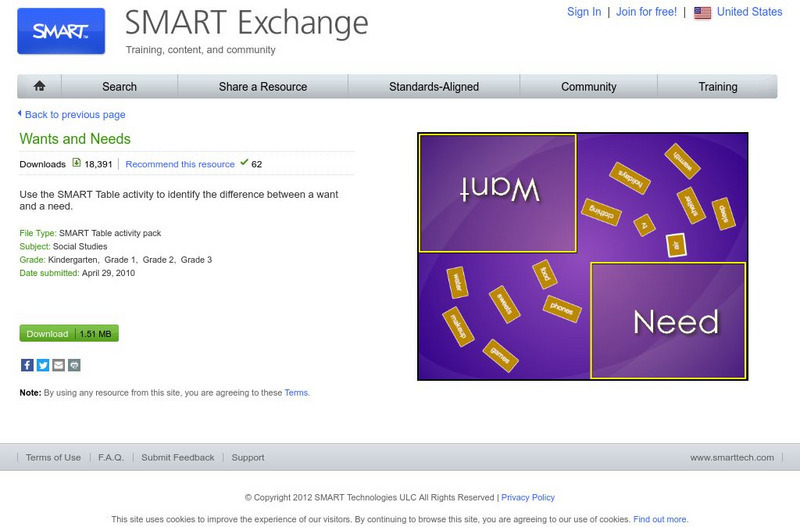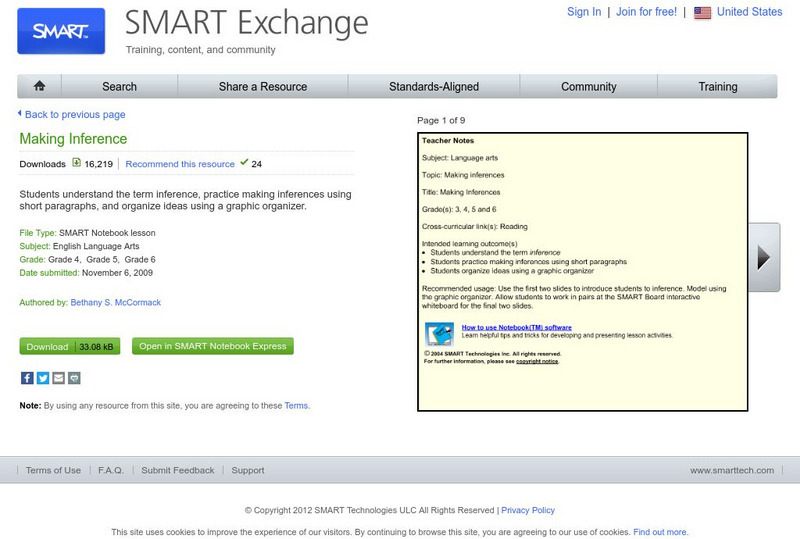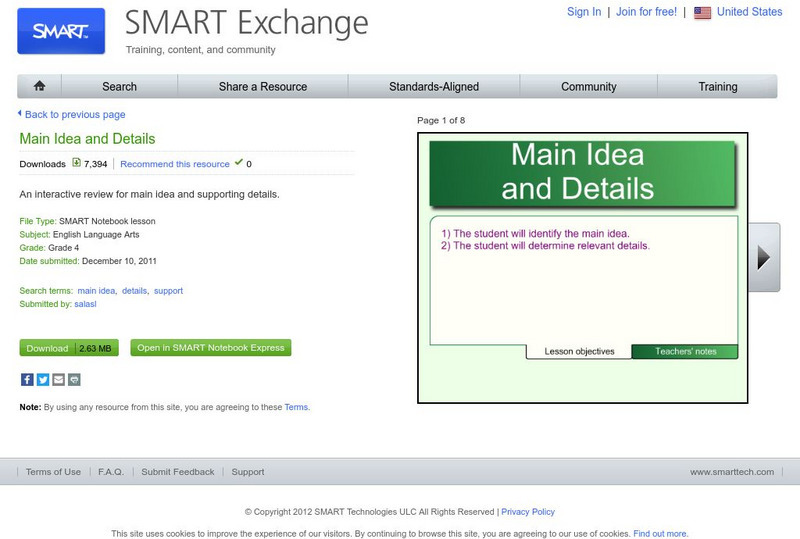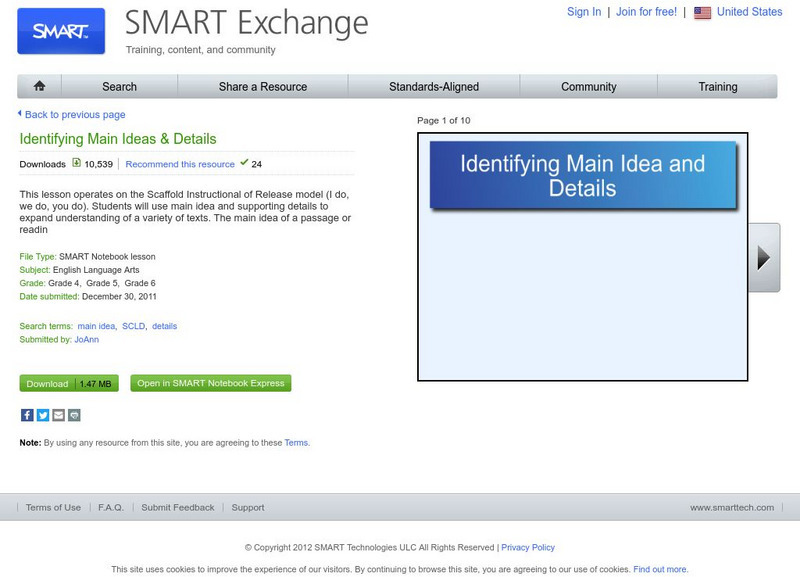SMART Technologies
Smart: Propaganda Techniques
In this lesson students learn what propaganda is and how to identify it. Students have the opportunity to create a video of propaganda.
SMART Technologies
Smart: Colonial Life
Factors that shaped British Colonial America. Compare and contrast life in the New England, Mid-Atlantic, and Southern colonies.
SMART Technologies
Smart: Exploring Explorers
This is a lesson activity which is written to engage visual and kinesthetic learners in their study on explorers: Leif Eriksson, Christopher Columbus, Erik the Red, Vasco Da Gama, John Cabot, Marco Polo, and Ferdinand Magellan.
SMART Technologies
Smart: Fact vs. Opinion
In this activity provided by SMART, students will learn and practice separating fact from opinion.
SMART Technologies
Smart: Prefix and Suffix Mix Up
In this activity provided by SMART, students will learn the meaning of common prefixes and suffixes, practice combining root words with prefixes and suffixes, and recognize changes in words after combining prefixes and suffixes.
SMART Technologies
Smart: Ancient World Religions
Compare various religions and explore their similarities and differences in this SMART lesson. An opportunity to learn each religion's location of origin and basic tenets is provided as well.
SMART Technologies
Smart: Factors and Multiples
Students are introduced to prime numbers, composite numbers, prime factorization, greatest common factor, and least common multiple in this SMART whiteboard activity.
SMART Technologies
Smart: Simplifying Ratios (Smart Created)
Practice simplifying a ratio in this lesson by SMART. A question set accompanied by Spanish and French versions of this activity can be found on this site.
SMART Technologies
Smart: Halloween Poems
Using textual clues, students will match pictures with appropriate text within this Halloween-themed SMART whiteboard activity.
SMART Technologies
Smart: Reviewing Sequence of Events
Students will identify time-order words in order to comprehend passages, place events in sequential order on a time line, and use a flow chart to organize their thoughts for writing in this interactive SMART whiteboard activity.
SMART Technologies
Smart: Moon Phases (Smart Created)
Learn the names of the phases of the moon including the terms waxing and waning.
SMART Technologies
Smart: Life Cycle of a Frog
A slide depicting the different stages of frog development organized as a life cycle. It includes descriptions on pull tabs offscreen.
SMART Technologies
Smart: Life Cycle of a Butterfly
Students learn about the life cycle of a butterfly and put the stages of a butterfly's life cycle in order in this SMART whiteboard activity.
SMART Technologies
Smart: Tall Tales, Folk Tales, and Fables Review
This is a review of 3 stories, then placing the attributes with the correct genre. Although others may not read the exact story, you could just replace the picture with another picture that represents the story you read.
SMART Technologies
Smart: Dice and Card Math Games
Kids love dice and playing with decks of cards. Leverage these two great (and inexpensive tools) to help students work on math facts, place value and more.
SMART Technologies
Smart: Sampling and Misleading Graphs
Teachers can use Smart Exchange to download a SMART Notebook lesson covering the topic of sampling and misleading graphs.
SMART Technologies
Smart: Wants and Needs
Use the SMART Table activity to identify the difference between a want and a need.
SMART Technologies
Smart: The Interactive Educator Online Magazine [Pdf]
An excellent and thorough online magazine for educators, highlighting particularly the technological tools needed to help students be successful. Includes information about building online learning communities, the pros and cons of...
SMART Technologies
Smart: Causes of the Revolutionary War
Highlighting the domino effects that led to the American Revolution, this interactive SMART lesson uses videos, games, and other facts to help students learn about the war.
SMART Technologies
Smart: Making Inference
Students will understand the term "inference," practice making inferences using short paragraphs, and organize ideas using a graphic organizer in this SMART whiteboard activity.
SMART Technologies
Smart: Main Idea and Details
The interactive lesson is a review of main idea and supporting details.
SMART Technologies
Smart: Developing Characters and Settings
In this activity provided by SMART, students will give reasons why they feel characters are important in a story. Students will explore how to create effective characters and settings in their own writing by using a character web.
SMART Technologies
Smart: Making Inferences
Inferencing is finding clues and using background knowledge to determine an explanation from facts in a passage or story. It's "reading between the lines" of a story to understand what the author doesn't state.
SMART Technologies
Smart: Identifying Main Ideas & Details
This lesson operates on the Scaffold Instructional of Release model (I do, we do, you do). Students will use the main idea and supporting details to expand understanding of a variety of texts.



